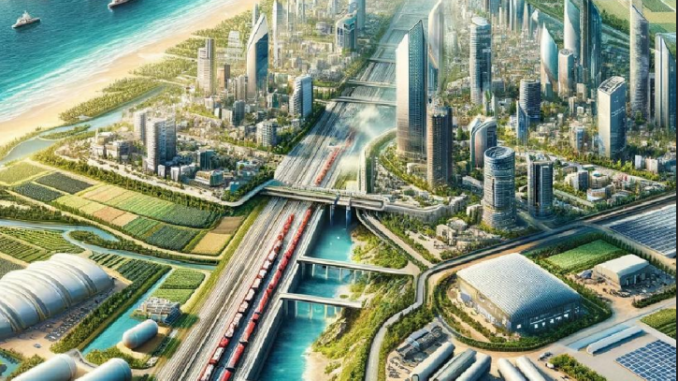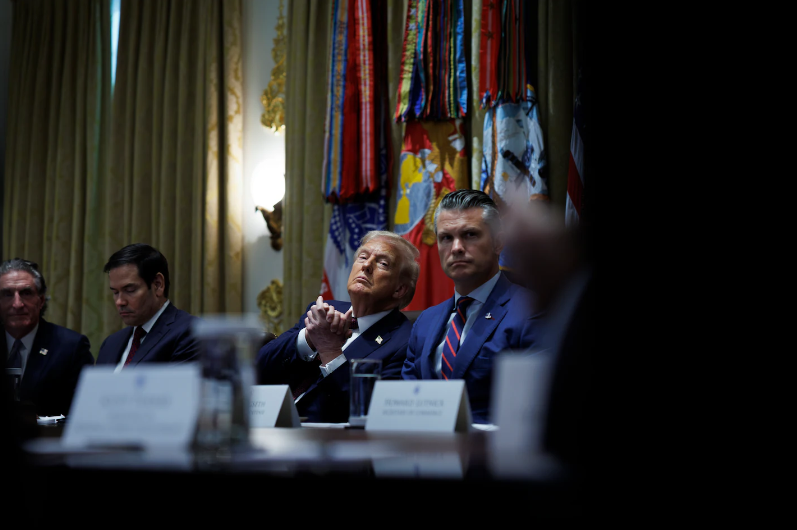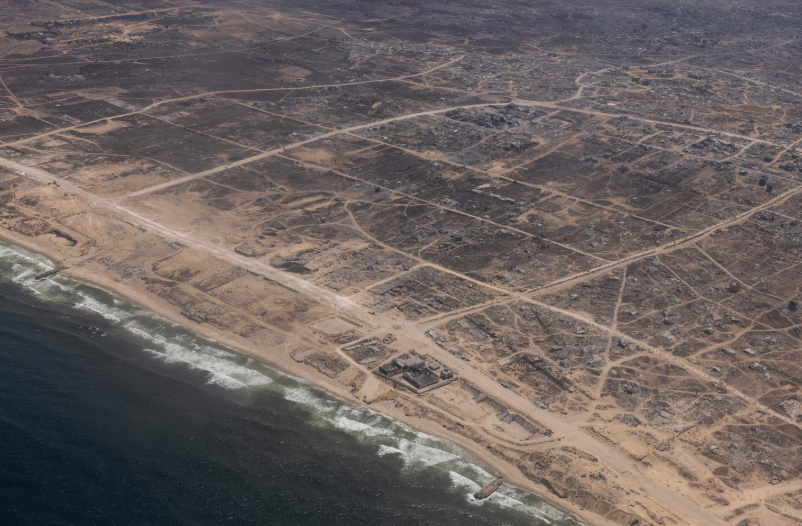
WHO PARTICIPATE IN « GREAT TRUST » MEETING
Participants in the great trust meeting included Secretary of State Marco Rubio, special presidential envoy Steve Witkoff, former British prime minister Tony Blair, and Trump’s son-in-law Jared Kushner
. The meeting was held at the White House to discuss ideas for how to end the war and what comes next
. No readout of the meeting or policy decisions were announced
. The meeting was part of the administration’s efforts to develop a plan for the postwar future of Gaza
. The GREAT Trust proposal, which involves turning Gaza into a trusteeship administered by the United States, was reportedly discussed in the context of the administration’s plans
. The proposal has been met with controversy and criticism, with some arguing that it would require the forced relocation of Palestinians and violate international law

A postwar plan for Gaza circulating within the Trump administration, modeled on President Donald Trump’s vow to “take over” the enclave, would turn it into a trusteeship administered by the United States for at least 10 years while it is transformed into a gleamingtourism resort and high-tech manufacturing and technology hub.
The 38-page prospectus seen by The Washington Post envisions at least a temporary relocation of all of Gaza’s more than 2 million population, either through what it calls “voluntary” departures to another country or into restricted, secured zones inside the enclave during reconstruction.
No readout of the meeting or policy decisions were announced, although Witkoff said the night before the gathering that the administration had “a very comprehensive plan.”
It’s not clear if the detailed and comprehensive GREAT Trust proposal is what Trump has in mind. But major elements of it, according to two people familiar with the planning, were specifically designed to make real the president’s vision of a “Riviera of the Middle East.”
Perhaps most appealing, it purports torequire no U.S. government funding and offer significant profit to investors. Unlike the controversial and sometimes cash-strapped GHF, which uses armed private U.S. security contractors to distribute food in four southern Gaza locations, the trust plan “does not rely on donations,” the prospectus says. Instead, it would be financed by public and private-sector investment in what it calls “mega-projects,” from electric vehicle plants and data centers to beach resorts and high-rise apartments.

Initial costs would be financed using as collateral the 30 percent of Gaza land that planners have said is already “publicly” owned and would immediately belong to the trust. That is “the biggest and easiest. No need to ask anyone,” Tancman noted in the margin of one trust planning document seen by The Post. “I’m afraid to write that,” Eisenberg replied in a note, “because it could look like appropriation of land.”
Investor-financed “mega-projects” include paving a ring road and tram line around Gaza’s perimeter, which the planners flatteringly label the “MBS Highway,” after Saudi Crown Prince Mohammed bin Salman, whose approval of such an initiative would go a long way toward regional acceptance. A modern north-south highway through Gaza’s center is named after United Arab Emirates President Mohammed bin Zayed al-Nahyan. A new port and airport would be built in the far south, with direct land connections to Egypt, Saudi Arabia and Israel.
Saudi Arabia and the United Arab Emirates are both publicly committed to the Egyptian proposal for Gaza and eventual Palestinian statehood, with no indication that they have agreed to any element of the trust plan.
The GREAT Trust also envisions awater desalination plant and solar array in Egypt’s Sinai Peninsula thatwould provide Gaza with water and electricity. Gaza’s eastern border with Israel would be a “smart” industrial zone, including American electric vehicle companies and regional data centers to serve Israel and the Persian Gulf countries. Gaza’s western waterfront would be reserved for the “Gaza Trump Riviera,” boasting“world-class resorts” with the possibility of artificial islands similar to the palm-shaped ones built off the UAE city of Dubai.
In the center of the enclave, between the waterfront resorts and the industrial zone — which the plan projects would create a million jobs — apartment buildings of up to 20 stories would be constructed in six to eight “dynamic, modern and AI-powered smart planned cities.” The mixed-use areas would include “residences, commerce, light industry and other facilities, including clinics and hospitals, schools and more,” interspersed with “green areas, including agricultural land, parks and golf courses.”
Gazan families who remain, or leave and then return after residential areas are completed to exchange their land tokens, would be offered ownership of new 1,800-square-foot apartments the plan values at $75,000 each.
Adil Haque, a professor and expert on the law of armed conflict at Rutgers University, said that any plan in which Palestinians are prevented from returning to their homes, or inadequately supplied with food, medical care and shelter, would be unlawful — regardless of any cash incentive offered for departures.
Abu Mohamed, a 55-year-old father speaking over WhatsApp from Gaza on Saturday, said that despite the catastrophic situation, he would never leave. “I’m staying in a partially destroyed house in Khan Younis now,” he said. “But we could renovate. I refuse to be made to go to another country, Muslim or not. This is my homeland.”

Heba Farouk Mahfouz contributed to this report.
Advertisement
